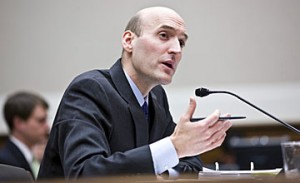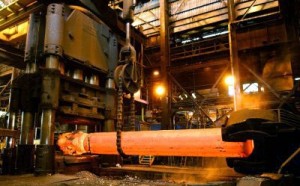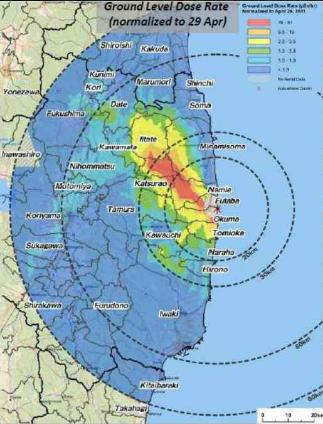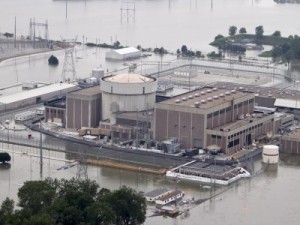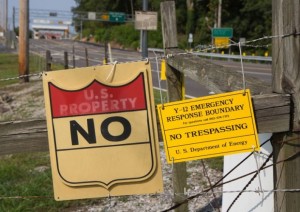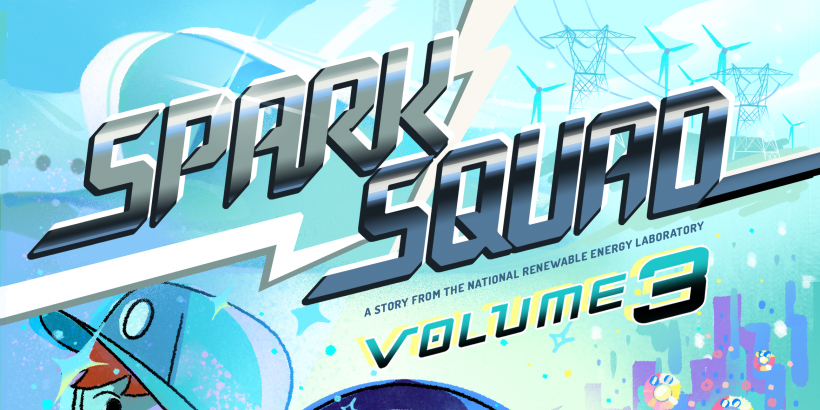2012 ~ The year that was in nuclear energy
Plus a few pointers to what's in store for 2013
On a global scale the nuclear industry had its share of pluses and minuses in 2012. Japan's Fukushima crisis continues to dominate any list of the top ten nuclear energy issues for the year. (See more below on Japan's mighty mission at Fukushima.)
In the United States, while the first new nuclear reactor licenses in three decades were issued to four reactors, the regulatory agency that approved them had a management meltdown that resulted in the noisy departure of Gregory Jazcko, its presidentially appointed chairman. His erratic tenure at the Nuclear Regulatory Commission cast doubt on its effectiveness and tarnished its reputation as one of the best places to work in the federal government.
Iran continues its uranium enrichment efforts
The year also started with another bang, and not the good kind, as new attacks on nuclear scientists in Iran brought death by car bombs. In July, western powers enacted new sanctions on Iran over its uranium enrichment program. Since 2011, economic sanctions have reduced Iran's oil exports by 40 percent, according to the U.S. Energy Information Administration.
In late November, the U.S. Senate approved a measure expanding the economic sanctions that have reduced Iran's export earnings from oil production. Despite the renewed effort to convince Iran to stop its uranium enrichment effort, the country is pressing ahead with it. Talks between Iran and the United States and western European nations have not made any progress.
Nukes on Mars
Peaceful uses of the atom were highlighted by NASA's Mars Curiosity Rover, which executed a flawless landing on the red planet in August with a nuclear heartbeat to power its science mission. Data sent to Earth from its travels across the red planet will help determine whether or not Mars ever had conditions that would support life.
SMRs are us
The U.S. government dangled an opportunity for funding of innovative small modular reactors, e.g., with electrical power ratings of less than 300 MW. Despite vigorous competition, only one vendor, B&W, was successful in grabbing a brass ring worth up to $452 million over five years.
The firm immediately demonstrated the economic value of the government cost-sharing partnership by placing an order for long lead time components. Lehigh Heavy Forge and B&W plan to jointly participate in the fabrication and qualification of large forgings for nuclear reactor components that are intended to be used in the manufacture of B&W mPower SMRs.
The Department of Energy said that it might offer a second round funding challenge, but given the federal government's overall dire financial condition, the agency may have problems even meeting its commitments in the first round.
As of December 1, negotiations between the White House and Congress over the so-called "fiscal cliff" were deadlocked. Congress created this mess, so one would expect that they could fix it.
The Congressional Budget Office has warned that if Congress doesn't avert the fiscal cliff, the economy might slip into recession next year and boost the unemployment rate to 9.1 percent in the fourth quarter of 2013, compared with 7.9 percent now. Even record low natural gas prices and a boom in oil production won't make much of a difference if there is no agreement by January 1, 2013.
Japan's mighty mission at Fukushima
Japan's major challenges are unprecedented for a democratically elected government. It must decontaminate and decommission the Fukushima site, home to six nuclear reactors, four of which suffered catastrophic internal and external damage from a giant tsunami and record shattering earthquake. The technical challenges of cleanup are daunting and the price tag, already in the range of tens of billions of dollars, keeps rising with a completion date now at least several decades in the future.
- Japan is mobilizing a new nuclear regulatory agency that has the responsibility to say whether the rest of Japan's nuclear fleet can be restarted safely. While the government appointed highly regarded technical specialists to lead the effort, about 400 staff came over from the old Nuclear Industry Safety Agency that was found to be deficient as a deeply compromised oversight body. The new agency will struggle to prove itself an independent and effective regulator of nuclear safety.
- Japan has restarted two reactors and approved continued construction work at several more that are partially complete. Local politics will weigh heavily on the outlook for each power station with the "pro" forces emphasizing jobs and tax base and the anti-nuclear factions encouraged by widespread public distrust of the government and of the nation's nuclear utilities.
- Despite calls for a phase out of all nuclear reactors in Japan, the country will continue to generate electric power from them for at least the next 30-40 years.
- Like the United States, Japan has no deep geologic site for spent fuel. Unlike the United States, Japan has been attempting to build and operate a spent fuel reprocessing facility. Plagued by technical missteps and rising costs, Japan may consider offers from the United Kingdom and France to reprocess its spent fuel and with such a program relieve itself of the plutonium in it.
U.S. nuclear renaissance stops at six

The pretty picture of a favorable future for the nuclear fuel cycle in 2007 turned to hard reality in 2012.
In 2007, the combined value of more than two dozen license applications for new nuclear reactors weighed in with an estimated value of over $120 billion. By 2012, just six reactors were under construction. Few will follow soon in their footsteps due to record low prices of natural gas and the hard effects of one of the nation's deepest and longest economic recessions.
The NRC approved licenses for two new reactors at Southern's Vogtle site in Georgia and two more at Scana's V.C. Summer Station in South Carolina. Both utilities chose the Westinghouse AP1000 design and will benefit from lessons learned by the vendor that is building four of them in China. In late November, Southern's contractors, which are building the plants, said that both of the reactors would enter revenue service a year late. For its part, Southern said that it hasn't agreed to a new schedule.
The Tennessee Valley Authority recalibrated its efforts to complete Watts Bar II, adding a three-year delay and over $2 billion in cost escalation. TVA's board told the utility's executives that construction work to complete Unit 1 at the Bellefonte site cannot begin until fuel is loaded in Watts Bar.
The huge increase in the supply of natural gas, resulting in record low prices for it in the United States, led Exelon Chairman John Rowe to state that it would be "inconceivable" for a nuclear utility in a deregulated state to build new reactors.
Four reactors in dire straights
In January, Southern California Edison (SCE) safety shut down two 1100-MW reactors at its San Onofre Nuclear Generating Station (SONGS) due to excessive wear found in the nearly new steam generators at both reactors.
SCE submitted a restart plan to the NRC for Unit 2 in November. The review, according to the agency, could take months. SCE removed the fuel from Unit 3 last August, a signal that the restart of that reactor will be farther in the future owing to the greater extent of the damage to the tubes its steam generator.
The NRC said that a key cause of the damage to the tubes was a faulty computer program used by Mitsubishi, the steam generator vendor, in its design of the units. The rate of steam, pressure, and water content were key factors along with the design and placement of brackets to hold the tubes in place.
Elsewhere, in Nebraska the flood stricken Ft. Calhoun reactor owned and operated by the Omaha Public Power District (OPPD), postponed its restart to sometime in 2013.
It shut down in April 2011 for a scheduled fuel outage. Rising flood waters along the Missouri River in June damaged in the plant site though the reactor and switch yard remained dry.
The Ft. Calhoun plant must fulfill a long list of safety requirements before the NRC will let it power back up. To speed things along, OPPD hired Exelon to operate the plant. In February 2012, OPPD cancelled plans for a power uprate, also citing the multiple safety issues facing the plant.
In Florida, the newly merged Duke and Progress Energy firm wrestled with a big decision about what to do with the shutdown Crystal River reactor. Repairing the damaged containment structure could cost half again as much as an entirely new reactor. With license renewal coming up in 2016, Florida's Public Counsel thinks that Duke will decommission the unit and replace it with a combined cycle natural gas plant. Separately, Duke Chairman Jim Rogers said that he will resign at the end of 2013.
China restarts nuclear construction
After a long reconsideration (following the Fukushima crisis) of its aggressive plans to build new nuclear reactors, China's top level government officials agreed to allow new construction starts, but only with Gen III+ designs.
China has about two dozen Gen II reactors under construction. It will be 40-60 years before the older technology is off the grid. China also reduced its outlook for completed reactors from an estimate of 80 GWe by 2020 to about 55-60 GWe. Plans for a massive $26-billion nuclear energy IPO (initial public offering) still have not made it to the Shanghai Stock Exchange. No reason has been made public about the delay.
India advances at Kudanlulam
India loaded fuel at Kudankulam where two Russian built 1000-MW VVER reactors are ready for revenue service. The Indian government overcame widespread political protests in its southern state of Tamil Nadu. India's Prime Minister Singh blamed the protests on international NGOs (non-governmental organizations).
One of the key factors that helped the government overcome the political opposition is that Nuclear Power Corporation of India Limited told the provincial government that it could allocate half of all the electricity generated by the plants to local rate payers. Officials in Tamil Nadu will decide who gets power. India suffered two massive electrical blackouts in 2012, the second of which stranded over 600 million people without electricity for up to a week.
Also, India said that it would proceed with construction of two 1600-MW Areva EPRs at Jaitapur on its west coast south of Mumbai and launched efforts for construction of up to 20 GWe of domestic reactors.
India's draconian supplier liability law continues to be an effective firewall in keeping American firms out of its nuclear market.
UK has new builder at Horizon
The United Kingdom suffered a setback in its nuclear new build as two German utilities backed out of the construction of up to 6 Gwe of new reactors at two sites. Japan's Hitachi successfully bid to take over the project. A plan for a Chinese state-owned firm to bid on the Horizon project in collaboration with Areva never materialized.
Also in the UK, General Electric pursued an encouraging dialog with the Nuclear Decommissioning Authority to build two of its 300-MW PRISM fast reactors to burn off surplus plutonium stocks at Sellafield. The PRISM design benefits from the technical legacy of the Integral Fast Reactor developed at Argonne West in Idaho.
You can't make this stuff up
In July, three anti-war activitists breached multiple high-tech security barriers at the National Nuclear Security Administration's Y-12 highly enriched uranium facility in Tennessee. The elderly trio, two men on the dark side of 55 and a woman in her 80s, were equipped with ordinary wire cutters and flashlights.
The intruders roamed the site undetected for several hours in the darkness of the early morning and spray painted political slogans on the side of one of the buildings. They were looking for new artistic venues when a lone security guard finally stopped their travels through the plant.
The government said that the unprecedented security breach was no laughing matter, firing the guards on duty at the time and the contractor they worked for. Several civil servants "retired." The activists, if convicted, face serious jail time.
None of the HEU stored at the site was compromised, but subsequent investigations by the Department of Energy found a lack of security awareness, broken equipment, and an unsettling version of the "it can't happen here" attitude by the guards that initially mistook the intruders for construction workers.
The protest effort brought publicity to the activists' cause far beyond their wildest dreams and produced the predictable uproar in Congress. The DOE's civilian fig leaf covering the nation's nuclear weapons program was once again in tatters.
So long Chu
Given the incident at Y-12, Energy Secretary Steven Chu, who came to government from the quiet life of scientific inquiry, must have asked himself once again why he ever accepted the job in Washington in the first place.
Chu is expected to leave Washington. That he's lasted this long is something of a miracle since the Obama White House tried to give him the heave ho this time last year after the Solyndra loan guarantee debacle, in which charges of political influence peddling by White House aides colored a half a billion dollar default on a DOE loan by a California solar energy company.
The predictable upswing in rumors of who might be appointed to replace him oozed into energy trade press and political saloons of the nation's capital.
Leading candidates are former members of Congress, former governors, or just about anyone with the experience and political know how to take on the job of running one of the federal government's biggest cabinet agencies. It's a short list of people who really can do the job and a long list of wannabes. With shale gas and oil production on the rise, having a background in fossil fuels will likely help prospective candidates.
_______________________________
Dan Yurman published the nuclear energy blog Idaho Samizdat from 2007-2012.


